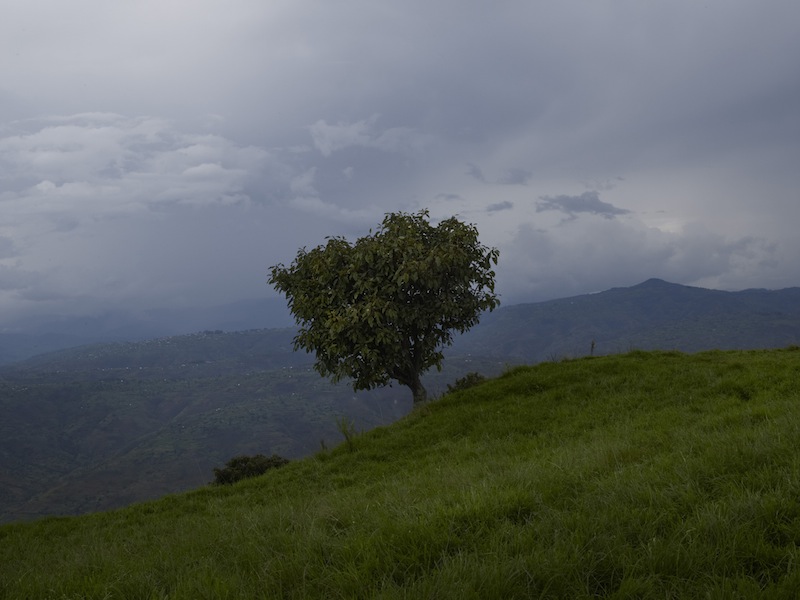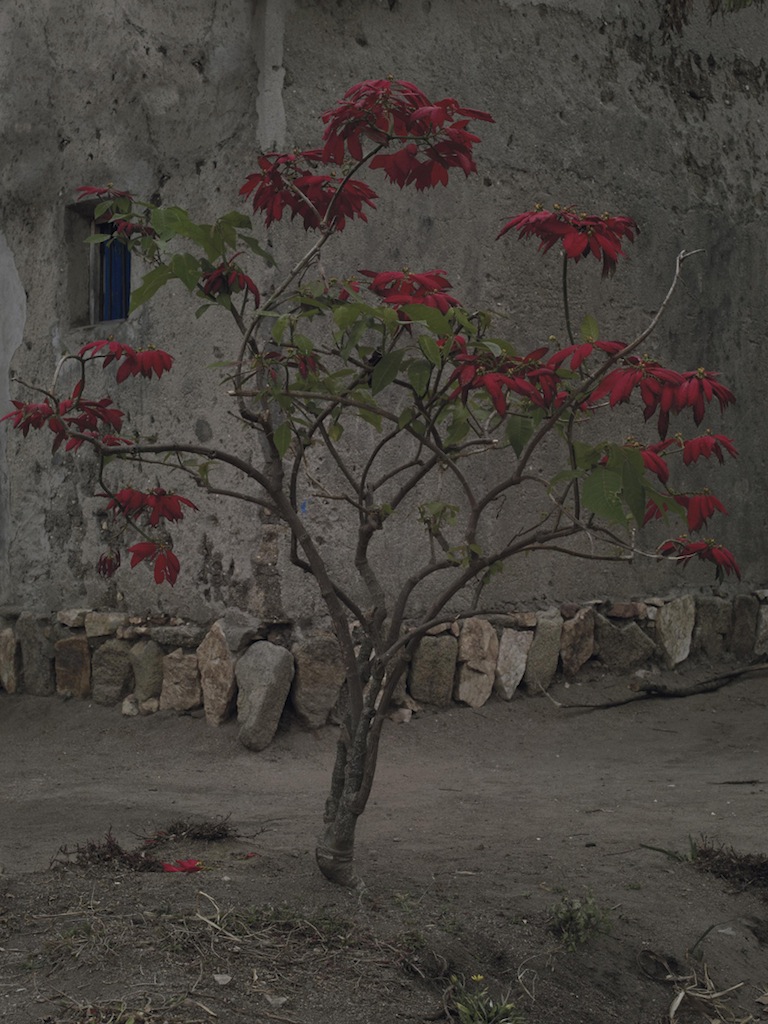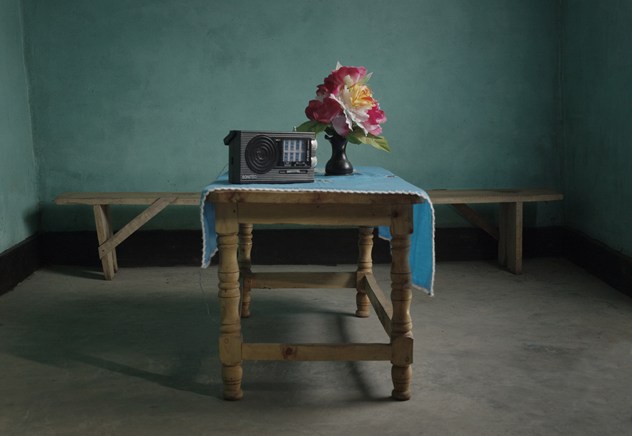AMSTERDAM. Per ricordare il ventennale del genocidio in Ruanda, Foam ospiterà fino al 7 settembre la mostra Love Radio di Eefje Blankevoort e Anoek Steketee sul complesso processo di riconciliazione post-genocidio raccontato attraverso la popolare radiosoap Musekeweya (‘New Dawn’).

Il progetto Love Radio è a cavallo tra la linea sottile di realtà e finzione; le fotografie e video-installazioni, infatti, non fungono solo da documentazione perché la fotocamera è stata utilizzata sia per sollevare questioni sociali ma anche come uno strumento della fantasia e di riflessione. Il fotografo Anoek Steketee e il giornalista-regista Eefje Blankevoort hanno spesso viaggiato in Ruanda insieme ponendosi sempre questa domanda: “Come possono vivere insieme carnefici e vittime dopo una storia di omicidi raccapriccianti?”.

Amore Radio, però, racconta anche la magia della radio e l’influenza dei media nella società. La stessa frequenza con cui la stazione radio Radio Libre des Mille Collines (RTLM) ha fomentato la popolazione a uccidere i Tutsi nel 1994, ora trasmette la radiosoap Musekeweya, programma molto popolare e ascoltato da circa l’80% della popolazione ruandese. La storia si svolge in due villaggi immaginari, Muhumuro e Bumanzi, dove nonostante l’inimicizia esistono pure i legami di amicizia tra i villaggi. L’amore tra Shema e Batamuriza è come un ruandese ‘Romeo e Giulietta’. Musekeweya sembra essere una soap abbastanza normale fatta di intrighi, eroi, cattivi e romanzi. Tuttavia, vi è una differenza: la soap non deve solo intrattenere gli ascoltatori ma soprattutto deve educare spiegando come la violenza possa essere prevenuta. Oltre a questa storia, la mostra affronterà il tema relativo alla realtà del Ruanda in questo momento. Nel video-interviste, creatori e gli ascoltatori della soap raccontano le loro esperienze e gli sviluppi nel Paese. Pezzo per pezzo, la realtà complessa esce allo scoperto e diventa evidente che la verità non esiste. E mentre i lieto fine dominano nelle soap, la riconciliazione nella vita reale è difficile da ottenere.
Il webdocumentario è disponibile su www.loveradio-rwanda.org.
Info: Foam

English version. This year marks twenty years since the genocide in Rwanda. In light of this, Foam presents Love Radio, a transmedia exhibition of Eefje Blankevoort and Anoek Steketee about the complex process of reconciliation in post-genocide Rwanda, told by means of the popular radio soap Musekeweya (‘New Dawn’). The project Love Radio straddles the thin line between fact and fiction. The photographs and video-installations do not strictly adopt a documentary approach. The camera is not only being used to raise social issues, but is also an instrument of the imagination. By playing with light and directing those portrayed, alienating images are created in which the surroundings serve as an oppressive decor. Photographer Anoek Steketee and journalist/filmmaker Eefje Blankevoort frequently travelled to Rwanda together. With the following question as their starting point: “how can perpetrators and victims live with each other again after a history of gruesome killings?“, they chart the complex reality of a country after a traumatic event in a poetic manner. In doing this, they do not put emphasis on the horrific history, but on the present and future of Rwanda.

Love Radio is also about the magic of radio and the influence of media in a society. The same frequency at which radio station Radio Libre des Mille Collines (RTLM) stirred up the population to kill the Tutsi in 1994, now radio soap Musekeweya is being broadcast. The weekly soap is widely popular and is listened to by approximately 80% of the Rwandan population. The story takes place in two fictional villages, Muhumuro and Bumanzi. Despite the enmity, friendship ties between the villages exist as well. The love between Shema and Batamuriza is like a Rwandan ‘Romeo and Juliet’. Musekeweya seems to be a fairly normal soap at first, full of intrigue, heroes, villains, and romances. However, there is a difference: the soap must not only entertain listeners, but above all, needs to educatie how violence arises and how it can be prevented. Besides this story, another one will be discussed in the exhibition as well: the reality of Rwanda at present. In video-interviews, creators and listeners of the soap tell about their experiences and the developments in the country. Piece by piece, the complex reality comes forward and it becomes clear that the truth does not exist. While happy endings dominate the soap, reconciliation is obstinate in real life. Love Radio is an initiative of filmmaker and journalist Eefje Blankevoort (1978, NL) and photographer Anoek Steketee (1974, NL). The project comprises a web documentary, short visual stories for smartphones and an exhibition at Foam. The project is developed in close cooperation with Sara Kolster, Kummer & Herrman, Martijn Eerens, Thijs Gadiot en Thomas Lievestro. Love Radio is financed by The Creative Industries Fund NL, Dutch Cultural Media Fund, Foundation for Democracy and Media, SNS REAAL Fonds, Sem Presser Fonds, The Amsterdam Fund for the Arts (AFK), Mondriaan Fund. Partners: Prospektor, SubmarineChannel, Foam, NIOD, Humanity House, Radio La Benevolencija.
The webdocumentaire is available on www.loveradio-rwanda.org. This exhibition is made possible by EIZO.

